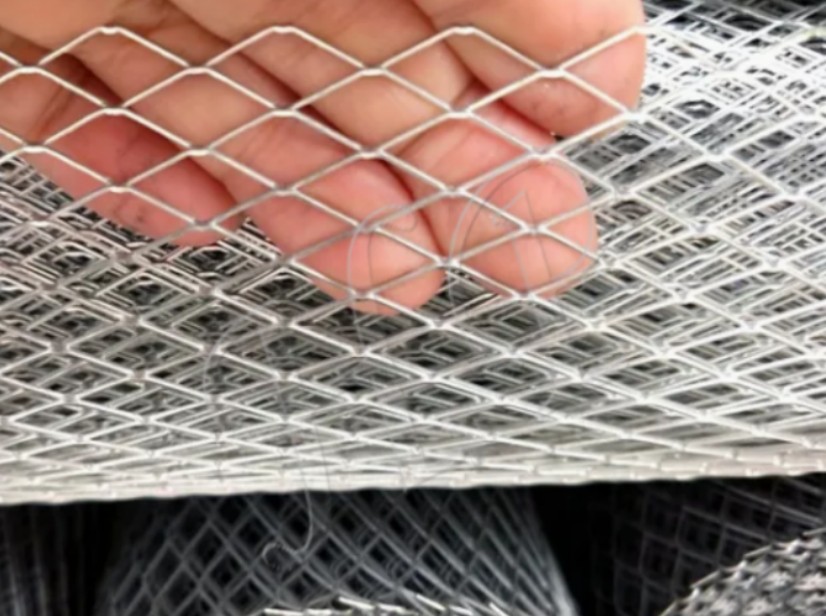Choosing the Right 4×8 Expanded Metal Sheet for Industrial Safety and Decorative Applications

So, you’re staring at a massive, blank space in your project—could be a factory floor, a fancy new balcony, or maybe a security fence around a new construction site. You need something strong, something that can take a hit, but you also don’t want it to feel like a prison or a solid, boring wall. You need airflow, you need light to filter through, and honestly, you need a bit of style. This is where that unsung hero of the industrial and design worlds comes in: the humble yet incredibly powerful expanded metal 4×8 sheet. It’s not just mesh; it’s a whole sheet of potential, cut and stretched into a diamond-patterned workhorse. Think of a single, solid sheet of metal that gets slit and stretched, transforming into a rigid, integrated network of strands and openings. That’s the magic. And the 4×8 size? That’s the sweet spot. It’s the standard, the go-to, the big canvas that makes covering large areas efficient and, frankly, less of a headache. Let’s dive into why this specific sheet is such a game-changer and how you can pick the perfect one without getting lost in a sea of technical jargon.
The Wonderful World of Expanded Metal Basics
First off, let’s get one thing straight. Not all expanded metal is created equal. When you order a 4×8 expanded metal sheet, you’re getting a piece that’s 4 feet wide and 8 feet long, but the magic is in the details you can’t see from a distance. The process is brilliantly simple yet genius. They start with a solid coil of metal—steel, aluminum, stainless steel, you name it. Then, in one continuous, synchronized motion, a machine punches a pattern of slits into it and stretches it apart. This isn’t welding or weaving; the entire sheet is one single, unbroken piece of metal. This is what gives it its phenomenal strength. Because the strands are all interconnected, a stress point in one area gets distributed across the whole panel. You can’t unravel it, and it’s incredibly difficult to tear.
Now, when you’re browsing for that perfect expanded metal 4×8 sheet, you’ll bump into two main characters: standard and flattened. Standard expanded metal is the one with the charming, slightly rugged personality. It has those characteristic raised edges where the stretching happened, giving it a textured, non-slip surface that is an absolute godsend for flooring and walkways. It’s tough, it’s gritty, and it means business. Flattened expanded metal, on the other hand, has been sent through a cold-rolling mill after the expanding process. This squishes it down, making the surface flat and smooth. It’s the more refined cousin, perfect for applications where you need a sleek look or where that raised texture would get in the way, like in decorative screens or machine guards where things might slide against it. Choosing between them is your first big decision. Do you need grip and raw strength, or a smooth, flat finish?
Picking the Perfect Sheet for Keeping Things Safe
When the primary goal is to keep people safe, to protect equipment, or to secure a perimeter, your choice of an expanded metal 4×8 sheet becomes critical. This is where you can’t afford to cut corners. The beauty of using expanded metal for safety is that it provides a barrier without creating a visual barrier. Workers can see through it, light and air can pass through it, but it will staunchly stop fingers, tools, and even entire bodies from going where they shouldn’t.
Let’s talk about machine guarding. You’ve got a piece of machinery with whirring, spinning parts that could cause serious injury. A solid shield would be claustrophobic and make it hard to monitor the machine’s operation. But a 4×8 expanded metal sheet fabricated into a guard is the perfect solution. It allows for full visibility so operators can see if something is going wrong, while providing a physical shield that meets OSHA and other safety standards. The key specification here is the strand width and the size of the openings. You need a pattern where the diamond openings are small enough to prevent any part of the body from reaching the danger zone. A heavier gauge with smaller openings is your best friend here. Similarly, for platform flooring and stair treads, that standard, non-slip pattern we talked about is indispensable. An expanded metal 4×8 sheet with those raised strands provides traction even when covered in oil, grease, or water, drastically reducing the risk of slips and falls. It’s strong enough to support significant weight, and because it’s open, debris, liquids, and snow just fall through, keeping the walking surface clear.
And we can’t forget about security fencing and enclosures. Chain-link is common, but it can be cut and lacks rigidity. A 4×8 expanded metal sheet used for fencing creates a much more formidable barrier. It’s difficult to cut through, provides privacy while still allowing air circulation, and can withstand impact much better than wire fencing. Whether you’re caging in a hazardous area, building a secure storage locker, or creating a perimeter fence, the robust nature of a full expanded metal 4×8 sheet delivers peace of mind that few other materials can match. It’s the silent, steadfast guardian of the workshop.
Bringing Style and Function with Decorative Metal
Now, let’s flip the script. What if your project isn’t in a gritty factory, but in a chic downtown loft, a modern restaurant, or your own backyard? This is where the expanded metal 4×8 sheet truly reveals its versatility. Designers and architects have fallen in love with it because it adds texture, pattern, and an industrial-modern vibe that is incredibly on-trend. But it’s not just about looks; it’s about smart design that serves multiple purposes.
Think about room dividers. In an open-plan living space, a solid wall can feel heavy and darken the room. But a partition made from a flattened expanded metal 4×8 sheet? That’s a different story. It defines the space, creates a sense of separation, but light and sightlines can travel through it, maintaining that open, airy feeling. The repeating diamond pattern casts beautiful, shifting shadows as the sun moves across the sky, turning a simple divider into a dynamic art installation. The same principle applies to decorative screens on a porch or balcony. They provide a degree of privacy from neighbors without turning your balcony into a stuffy box. The wind can still flow, reducing the load on the structure, but you’re shielded from prying eyes.
The applications are endless. How about a custom radiator cover? A flattened 4×8 expanded metal sheet allows the heat to convect freely into the room while hiding the unsightly radiator underneath. It’s a perfect marriage of form and function. Or consider architectural facades. Cladding part of a building’s exterior with expanded metal creates a stunning, textured appearance, plays with light and shadow, and can even be used for sun shading to reduce cooling costs. For interior design, you can use it for cabinet fronts, fireplace screens, or even as a backing for a custom headboard. The material choice matters here too. For decorative uses, aluminum or stainless steel are popular because they are corrosion-resistant and can be left in their natural state for a sleek, metallic look, or powder-coated in any color you can imagine to match your design scheme. A single expanded metal 4×8 sheet can be the centerpiece that ties an entire room together.
The Nitty-Gritty Details You Just Can’t Ignore
Okay, so you’re sold on the idea. But before you click “add to cart” on that expanded metal 4×8 sheet, there are a few key specs you need to wrap your head around. This isn’t just about picking a pretty pattern; it’s about making sure it will actually work for your specific needs. Don’t worry, it’s not as complicated as it sounds.
First up: material. This is your biggest decision. Carbon steel is the tough, economical workhorse. It’s strong and great for industrial applications, but it will rust if not painted or galvanized. Galvanized steel is carbon steel coated with a layer of zinc, giving it excellent resistance to rust, making it ideal for outdoor fencing, storage racks, and other exposed applications. Aluminum is the lightweight champion. It won’t rust, has a great strength-to-weight ratio, and is perfect for decorative panels, marine environments, or anywhere weight is a concern. Then there’s stainless steel, the king of corrosion resistance and strength. It’s more expensive, but for food processing, chemical plants, or high-end architectural projects where you want a maintenance-free, shiny finish, it’s unbeatable. Your environment and budget will guide you here.
Next, let’s talk about thickness, or gauge. The lower the gauge number, the thicker and stronger the metal. A 10-gauge expanded metal 4×8 sheet is a beast, heavy and nearly immovable, perfect for a truck bed floor or heavy-duty industrial flooring. A 16-gauge sheet is more middle-of-the-road, great for machine guards and general fabrication. A 22-gauge sheet is thin, lightweight, and easy to cut, making it ideal for decorative screens or backing panels. You have to match the gauge to the load and abuse it will face. Finally, consider the strand width (the width of the metal “lines”) and the long way of the diamond (LWD) and short way of the diamond (SWD), which describe the size of the openings. A small LWD/SWD with wide strands means a heavier, stronger, and less open sheet. A large LWD/SWD with narrow strands means a lighter, more open sheet that offers less security but more visibility and airflow. It’s all a balancing act, and understanding these three things—material, gauge, and strand/opening size—will empower you to choose the perfect 4×8 expanded metal sheet with confidence.



